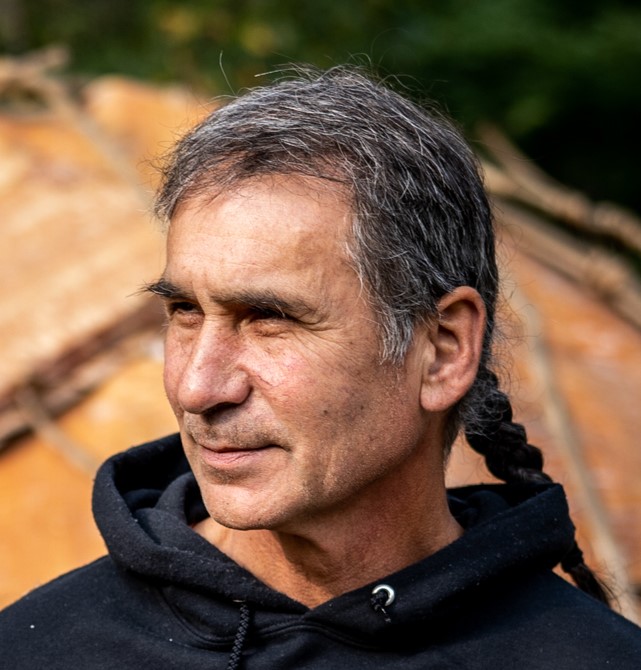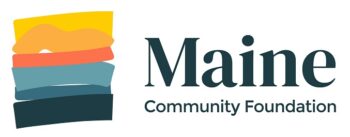How do you present an authentic view of Indigenous culture in Maine? This was one of the questions the Skowhegan History House Museum and Research Center asked in its mission to raise awareness of the Wabanaki.
One of the answers? To invite master artisan and former Penobscot Nation Chief Barry Dana to build a traditional wigwam with nine local high school students.
“We wanted to involve high school students directly with a highly skilled artisan/teacher like Dana in hopes of breaking down some of the stereotypes and biases which were exposed in the effort to end the use of the Indian mascot at the Skowhegan Area High School,” said community volunteer Susan Cochran.
Dana provided the materials: birchbark for the sides, basswood bark lacing to strap the bent ash saplings to create the frame, and spruce roots to sew the birchbark panels together. Once essential to tribal life, the wigwam provided shelter and structure.
“I took the kids into some really fine skills,” Dana says, “and they just nailed it.” Once they were well into the weeklong project, “it was just like a unified group of people that had a bond.”
Said Cochran, “The process of using their hands and these four wood products – ash, birch, spruce, and basswood – to build such a beautiful structure was a profound lesson about Native American values, lifestyle, and treatment of the environment.”
“Building a wigwam with Barry and Nate Dana reinforced my belief that Indigenous Maine culture needs to be preserved for generations to come,” says Carly McCabe, a first-year student at Skowhegan Area High School. “This is why I believe that education about Native culture by Native people is so important.”
The wigwam construction, completed in July, is the first phase of a two-year exhibit, “Wabanaki Voices: Connecting Past, Present, Future,” organized by the Skowhegan History House with support from a MaineCF Expansion Arts Fund grant. The organization, led by Board President Patricia Horine, formed an ad hoc committee with Penobscot consultants John Bear Mitchell and Darren Ranco and partnered with the Skowhegan Free Public Library, SAD 54 administrators, and other community groups to develop the wigwam project.
Built on the west lawn of the History House campus, the wigwam will be a site for speaker events and programs when it’s safe to engage the community. “A traditional Wabanaki dwelling has returned to the shores of the Kennebec where there used to be villages of such dwellings,” Cochran noted.
Dana’s son-in-law, Nathan Dana, who is part Passamaquoddy, helped gather the materials and also assisted with instruction. “I wanted to pass on these skills and that’s really my responsibility,” says Barry. He was pleased to witness Nathan become a teacher in the process.
Dana hopes the project will bring greater recognition of the town’s connection with Native people and the value of traditional skills.
“Just my being there helped bridge that gap of understanding, that we’re just people and we need to be understood.”
Top: Students Maddie Thorndike, left, and Carly McCabe work on the Skowhegan wigwam last summer. Photo Susan Cochran

Barry Dana of the Penobscot Nation. Photo Gabe Souza





